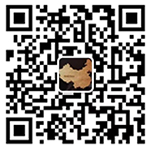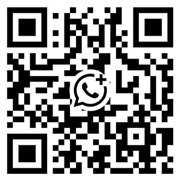Semikron Thyristor Diode Module
Home Products Thyristor Diode ModuleSemikron Thyristor Diode Module
Exception of Semikron Thyristor Diode Module, we also have a good position to manufacturer Semikron Diode Bridge Module, SKD series three phase diode bridge module and SKB series single phase diode bridge module. SKN/SKR Stud Diode, SKM series IGBT Module, SKT series Stud Screw fit Thyristor etc.
https://youtu.be/lf_VMZ_QlbU?si=4rZbj4_dSwlDioaT
The thyristor modules are enclosed in a SEMIPACK housing, which conforms to industry standards and facilitates seamless integration into existing equipment.
The SEMIPACK family features three distinct internal construction types:
- Soldered construction (SEMIPACK 1): Electrical contacts are formed through solder layers.
- Bonded construction (SEMIPACK 0, 2, 3): Connections between the top electrodes of the chips and the direct bonded copper (DBC) substrates are achieved via bond wires.
- Pressure contact construction (SEMIPACK 3, 4, 5, 6): Contacts are established through applied pressure, enabling a solder-free assembly.
The primary power terminals are located on the top of the enclosure and are designated as 1, 2, and 3 (corresponding to common anode-cathode, cathode, and anode, respectively). The auxiliary control terminals are labeled as K1, G1, K2, and G2.
SKKT thyristor modules are employed in a wide array of power applications, including power and control units, power regulators, AC regulators, converters, controllers for blast furnaces or chemical processes, welding equipment, and rectifiers for AC converters.
SKKD rectifier diode modules are used in various power equipment - power and control units, power regulators, converters, controllers, welding equipment, and as rectifiers for AC converters.
Thyristor-diode modules SKKH series are used in various power equipment - power and control units, power regulators, AC regulators, converters, controllers of blast furnaces or chemical processes, welding equipment, and as rectifiers for AC converters.
The thyristor module is controlled by current, requiring a current pulse to trigger conduction and cannot be turned off via the gate, only naturally turning off when the current crosses zero, making it suitable for low-frequency, high-power applications. The IGBT module is controlled by voltage, being a fully controllable switch where both turn-on and turn-off can be controlled by gate voltage, with self-turn-off capability, suitable for medium to high-frequency applications. The IGBT operates at a higher frequency than the thyristor, making it ideal for applications requiring precise control.
The main differences between a Silicon Controlled Rectifier (SCR) module and a Solid State Relay (SSR) lie in their functions and composition. An SCR can regulate current by controlling the conduction angle, while an SSR primarily acts as a switch and cannot regulate current. A Solid State Relay consists of an SCR and a synchronous trigger drive, with an integrated isolation trigger terminal, whereas an SCR requires external isolation. Although they may have similar functions in some applications, they differ significantly in regulation capability and internal structure.
Thyristor modules require a dedicated trigger circuit to provide precise trigger pulses, suitable for applications needing precise control. Solid-state relays are triggered via optocouplers, featuring built-in electrical isolation, and are easy to install, making them suitable for applications with lower switching frequencies. The anti-interference capability of thyristor modules depends on the design of the trigger circuit, while solid-state relays have relatively strong anti-interference due to optocoupler isolation, though electromagnetic interference should still be considered.
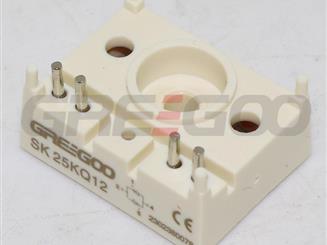
Anti-parallel Thyristor Modules
Anti-parallel Thyristor Modules, Semikron Design, compact size, high reliability.
Read More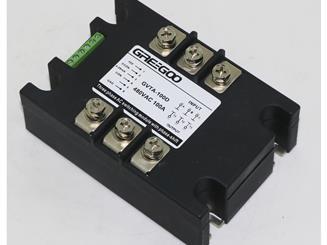
What's the difference between phase control Thyristor Module and Rectifier Diode Module?
Thyristor modules are used for controlled switching and power regulation, while rectifier diode modules are employed for converting AC to DC in rectification applications.
Read More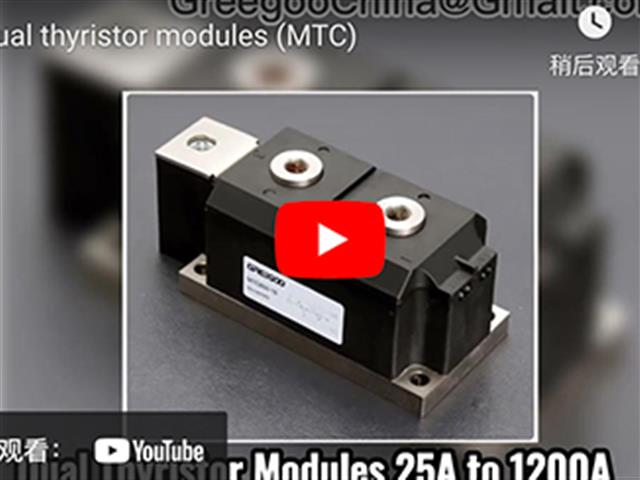
𝑫𝒖𝒂𝒍 𝑻𝒉𝒚𝒓𝒊𝒔𝒕𝒐𝒓 𝑴𝒐𝒅𝒖𝒍𝒆 - 𝑻𝒉𝒚𝒓𝒊𝒔𝒕𝒐𝒓-𝑻𝒉𝒚𝒓𝒊𝒔𝒕𝒐𝒓 𝑴𝒐𝒅𝒖𝒍𝒆 - 𝑷𝒉𝒂𝒔𝒆 𝑪𝒐𝒏𝒕𝒓𝒐𝒍 𝑻𝒉𝒚𝒓𝒊𝒔𝒕𝒐𝒓 𝑴𝒐𝒅𝒖𝒍𝒆 - 𝑺𝑪𝑹 𝑴𝒐𝒅𝒖𝒍𝒆 - 𝑺𝒊𝒏𝒈𝒍𝒆 𝑻𝒉𝒚𝒓𝒊𝒔𝒕𝒐𝒓 𝑴𝒐𝒅𝒖𝒍𝒆
𝑫𝒖𝒂𝒍 𝑻𝒉𝒚𝒓𝒊𝒔𝒕𝒐𝒓 𝑴𝒐𝒅𝒖𝒍𝒆 - 𝑻𝒉𝒚𝒓𝒊𝒔𝒕𝒐𝒓-𝑻𝒉𝒚𝒓𝒊𝒔𝒕𝒐𝒓 𝑴𝒐𝒅𝒖𝒍𝒆 - 𝑷𝒉𝒂𝒔𝒆 𝑪𝒐𝒏𝒕𝒓𝒐𝒍 𝑻𝒉𝒚𝒓𝒊𝒔𝒕𝒐𝒓 𝑴𝒐𝒅𝒖𝒍𝒆 - 𝑺𝑪𝑹 𝑴𝒐𝒅𝒖𝒍𝒆 - 𝑺𝒊𝒏𝒈𝒍𝒆 𝑻𝒉𝒚𝒓𝒊𝒔𝒕𝒐𝒓 𝑴𝒐𝒅𝒖𝒍𝒆
Read More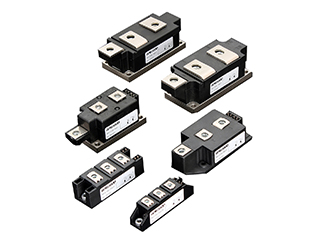
Dual Thyristor Module vs Dual Diode Module vs Thyristor Diode Module, what's their difference?
Difference between dual thyristor module, dual diode module and thyristor diode combined module
Read More











